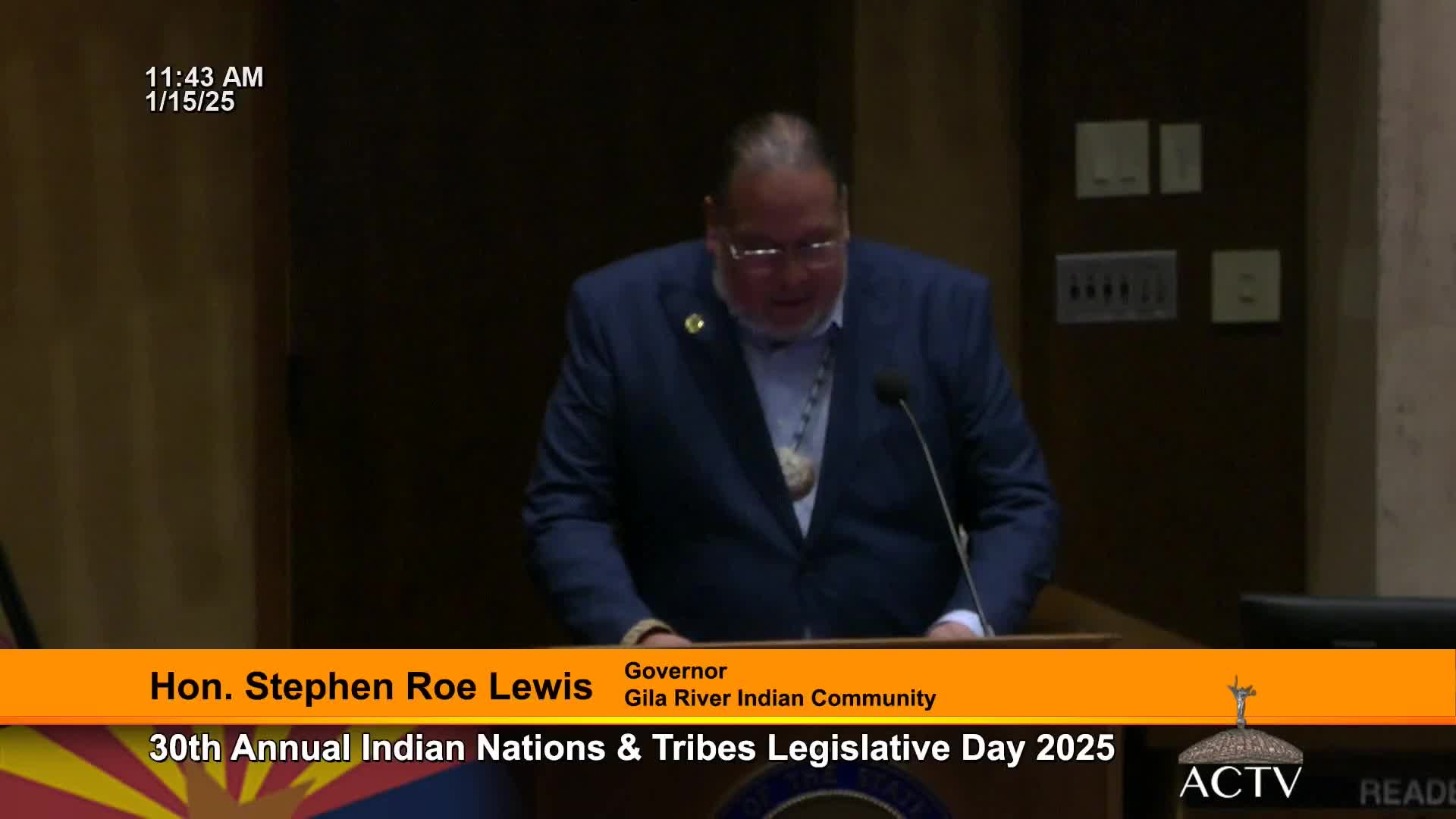Arizona leaders unite to tackle water challenges and secure tribal water rights
January 15, 2025 | Legislative, Arizona
This article was created by AI summarizing key points discussed. AI makes mistakes, so for full details and context, please refer to the video of the full meeting. Please report any errors so we can fix them. Report an error »

In the heart of Arizona, a pivotal gathering unfolded on January 15, 2025, during the 30th Annual Indian Nations & Tribes Legislative Day. The atmosphere buzzed with a sense of urgency as tribal leaders and state officials convened to address the pressing challenges of water management in an increasingly arid landscape.
A key speaker, reflecting on the legacy of his late father, emphasized the importance of collaboration in tackling water issues. He highlighted the monumental Gila River Arizona Water Settlement Act of 2004, which marked the largest water settlement in U.S. history. This year, the community celebrates its 20th anniversary, a testament to the enduring partnerships formed between tribes and state authorities.
The speaker paid tribute to strong indigenous women leaders, such as Chairwoman Flores of the Colorado River Indian Tribes, who recently secured her second term, and President Patia, who is following in her father's footsteps. Their leadership symbolizes a powerful movement within Arizona's tribes, showcasing the vital role of women in shaping water policy and tribal sovereignty.
As discussions progressed, the focus shifted to the looming generational challenge of new shortage guidelines for the Colorado River, set to take effect after 2026. The speaker urged unity among the 22 tribes and the state to confront these challenges head-on, emphasizing the need for timely water settlements for the Navajo, Hopi, and Paiute tribes. "A rising tide raises all boats," he stated, underscoring that securing water rights for one tribe strengthens the sovereignty of all.
The partnership with Governor Hobbs and the Arizona Department of Water Resources remains steadfast, as they work to protect Arizona's interests in negotiations with other states. The speaker reiterated the importance of not allowing Arizona to bear the brunt of water reductions alone, advocating for a collaborative approach to water management.
Looking ahead, the conversation expanded to encompass broader water supply issues, including groundwater management and conservation. The speaker called for a science-based examination of policies affecting groundwater levels, stressing that sustainable solutions require careful consideration and cooperation among all stakeholders.
As the meeting concluded, the sense of determination was palpable. Leaders left with a renewed commitment to work together, not only to secure water for their communities but to ensure a sustainable future for all of Arizona. The challenges are significant, but the spirit of partnership and resilience among the tribes and state officials shines brightly, promising a collaborative path forward in the face of adversity.
A key speaker, reflecting on the legacy of his late father, emphasized the importance of collaboration in tackling water issues. He highlighted the monumental Gila River Arizona Water Settlement Act of 2004, which marked the largest water settlement in U.S. history. This year, the community celebrates its 20th anniversary, a testament to the enduring partnerships formed between tribes and state authorities.
The speaker paid tribute to strong indigenous women leaders, such as Chairwoman Flores of the Colorado River Indian Tribes, who recently secured her second term, and President Patia, who is following in her father's footsteps. Their leadership symbolizes a powerful movement within Arizona's tribes, showcasing the vital role of women in shaping water policy and tribal sovereignty.
As discussions progressed, the focus shifted to the looming generational challenge of new shortage guidelines for the Colorado River, set to take effect after 2026. The speaker urged unity among the 22 tribes and the state to confront these challenges head-on, emphasizing the need for timely water settlements for the Navajo, Hopi, and Paiute tribes. "A rising tide raises all boats," he stated, underscoring that securing water rights for one tribe strengthens the sovereignty of all.
The partnership with Governor Hobbs and the Arizona Department of Water Resources remains steadfast, as they work to protect Arizona's interests in negotiations with other states. The speaker reiterated the importance of not allowing Arizona to bear the brunt of water reductions alone, advocating for a collaborative approach to water management.
Looking ahead, the conversation expanded to encompass broader water supply issues, including groundwater management and conservation. The speaker called for a science-based examination of policies affecting groundwater levels, stressing that sustainable solutions require careful consideration and cooperation among all stakeholders.
As the meeting concluded, the sense of determination was palpable. Leaders left with a renewed commitment to work together, not only to secure water for their communities but to ensure a sustainable future for all of Arizona. The challenges are significant, but the spirit of partnership and resilience among the tribes and state officials shines brightly, promising a collaborative path forward in the face of adversity.
View full meeting
This article is based on a recent meeting—watch the full video and explore the complete transcript for deeper insights into the discussion.
View full meeting
